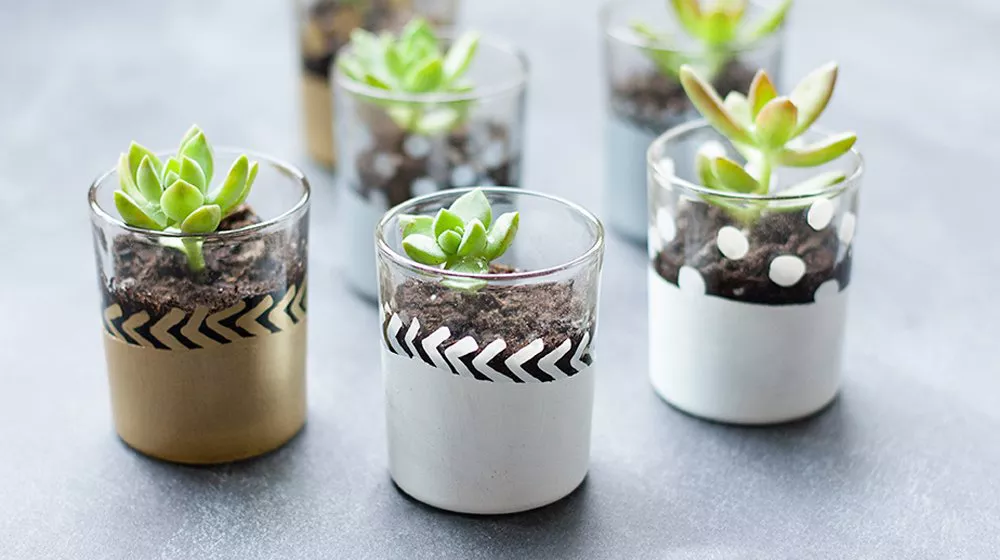Succulents have gained immense popularity in recent years due to their unique appearance and low-maintenance requirements. These hardy plants have adapted to thrive in arid environments, making them a favorite among both novice and experienced gardeners.
Succulents and Light
Light plays a crucial role in the survival and growth of succulents. These plants have evolved to thrive in bright, indirect sunlight or full sun, depending on the species. Succulents require a minimum of 6 hours of sunlight per day. To ensure your succulents flourish, place them near a sunny window or outdoors, where they can receive the required amount of light.
Succulents exhibit an array of fascinating adaptations to cope with harsh sunlight. Many have developed thick, fleshy leaves that store water for extended periods, while others have unique structures, like spines or trichomes, which protect them from excessive sunlight. Understanding the lighting needs of your succulent species is essential for their survival.
Watering Succulents
One of the most common misconceptions about succulents is that they require minimal watering. While they are indeed drought-tolerant, providing adequate water is essential for their survival. Succulents need a watering routine that allows the soil to dry out between waterings. This prevents root rot, a common issue in overwatered succulents.
The frequency of watering depends on various factors, including the species, the climate, and the pot’s drainage system. Succulents planted in pots with proper drainage need less frequent watering than those in containers with poor drainage. It is crucial to observe your succulents and adjust your watering schedule accordingly.
Succulent Soil
Succulents need well-draining soil to survive. The wrong type of soil can lead to root rot and other health issues. A common mistake is using standard potting soil, which retains too much moisture for succulents. A better choice is a specialized succulent or cactus mix, which provides the right balance of aeration and water retention.
Succulents also thrive in soil with a slightly acidic to neutral pH. Proper soil preparation is the foundation of healthy succulent growth. Amending the soil with materials like perlite or sand can help improve drainage and ensure the right soil conditions for your succulents.
Temperature Requirements for Succulents
Succulents have evolved to adapt to a range of temperatures, but it is crucial to understand the specific temperature requirements of the succulent species you are growing. In general, succulents prefer temperatures between 60°F to 80°F (15°C to 27°C). These plants can tolerate cooler temperatures but are less tolerant of extreme cold.
During the winter months, it is essential to protect succulents from frost and freezing temperatures. Some succulents, such as the Sempervivum, are cold-hardy and can survive in lower temperatures. However, most succulents are not frost-resistant and need to be brought indoors or adequately covered during cold spells.
Caring for Succulents
Caring for succulents goes beyond the basics of light, water, and soil. Proper maintenance and attention to detail can help your succulents thrive. Pruning, pest control, and repotting are all essential aspects of succulent care.
Pruning succulents can help maintain their shape, remove dead leaves, and encourage new growth. It is also an opportunity to propagate new plants from cuttings, a technique widely used by succulent enthusiasts.
Succulents are generally pest-resistant, but they can still fall victim to common garden pests like mealybugs and aphids. Regular inspection and immediate action are crucial in preventing infestations.
Repotting succulents is necessary when the plant outgrows its container or when the soil becomes depleted. Repotting allows you to refresh the soil and provides the succulent with more space to grow. Choose a pot that is only slightly larger than the current one, and ensure it has proper drainage.
Propagation of Succulents
One of the joys of growing succulents is the ease with which they can be propagated. Most succulents can be propagated from leaves, stem cuttings, or offsets. This process not only allows you to expand your succulent collection but also ensures the survival of your favorite plants.
Leaf propagation involves carefully plucking healthy leaves from the parent plant and allowing them to callus before planting them in well-draining soil. Over time, these leaves will produce new roots and shoots, eventually growing into a new succulent plant.
Stem cuttings are another method of propagation and are often used for succulents with thick stems. Cut a portion of the stem, let it callus, and then plant it in the appropriate soil. As with leaf propagation, the cutting will develop roots and new growth.
Offsets, or “pups,” are small succulent plants that grow at the base of the parent plant. Separating and replanting these offsets is a simple way to propagate succulents and ensure their continued survival.
Conclusion
Succulents are unique and fascinating plants, known for their adaptability and striking appearances. To ensure the survival and thriving of succulents, it is essential to provide the right conditions regarding light, water, soil, and temperature. By understanding the specific needs of your succulent species and following proper care and maintenance guidelines, you can enjoy the beauty and resilience of these remarkable plants in your garden or home.


